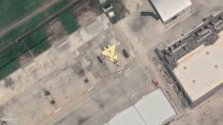Tankers aren't just a tool to extend range (thou they indeed can).
They're a tool to extend time on station - including aircraft, for those this time isn't that big(so bigger fuel tank, in this case, becomes not overly relevant). Moreover - when calculating in fuel - time on station extends disproportionally: almost all the fuel we add in-flight goes to "productive" part of the flight, instead of the transfer.
They're a tool to extend reaction time, of course - plane is already in the air, next to the operational zone.
They're a tool to "open" untouchable fuel reserve for combat - because the pilot can expect to get more, just a dozen minutes away, on his cruise altitude. For example, that may mean much more liberal use of reheat.
They're finally another tool to get more effective time out of aircraft - because actual flight isn't the most straining part of the sortie for equipment, airframe and pilot - it's take offs and landings.
Yes, but remember that the Flanker airframes are already designed around a 3.75 hour fuel endurance because that is the practical limit of what a fighter pilot can handle. The Tornado was also designed around a 4 hour fuel endurance for the same reason.
From what we can see, the J-20 is designed for even more range and endurance. This may be part of the reason why a 2 seat variant has been developed, as 2 pilots can operate longer missions.
So the fact remains that a larger airframe can hold more fuel for range/endurance/afterburners.
And if we're talking about J-20s undertaking long range air-to-air missions in the Western Pacific, I don't see tankers being a better option than a pair of drop tanks.
A Y-20 tanker has a huge radar signature, is vulnerable to AAMs and costs $150? Mn.
In comparison, a drop tank is like $10K? so you can buy like 15000 for the cost of a single tanker.
Plus drop tanks have a smaller radar signature than a tanker and can be dropped at any time so the J-20 can go fully stealthly. And if I do a back of the envelope calculation, a J-20 with a pair of drop tanks will get 500-1000km? offshore before the drop tanks are empty.
At that point a J-20 would still have a full internal fuel load, but this is not optimal for air-to-air combat. So after the drop tanks have been dropped, I can see a J-20 going to supercruise as they're going to have to dump fuel anyway.

